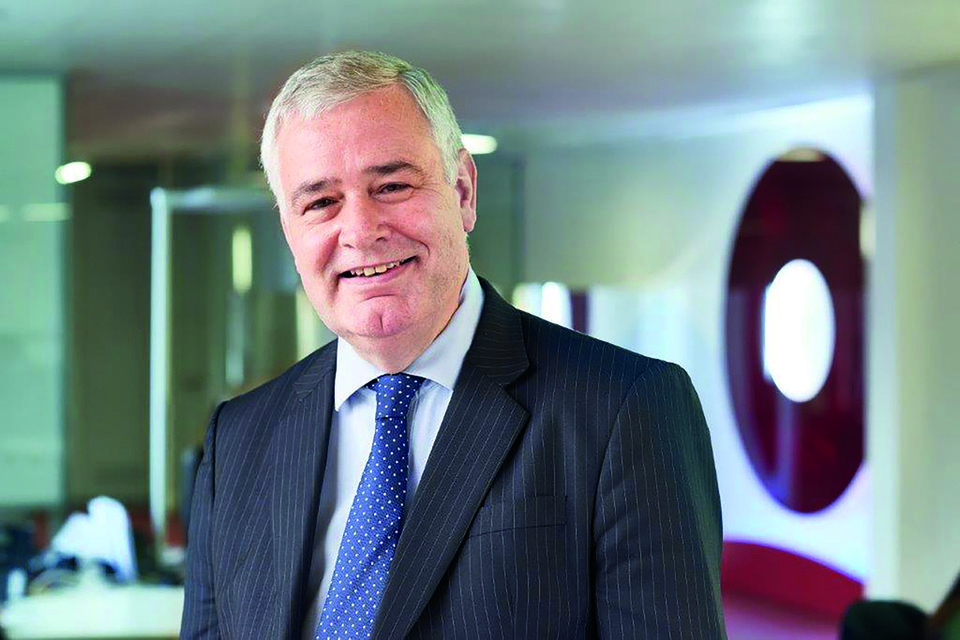2021: the year of greater digital access and the democratisation of wealth advice
Digital tools helped wealth managers build operational resilience in 2020 in the face of momentous disruption. Looking ahead to 2021, digitisation is expected to accelerate, benefiting both adviser and client, writes Ian Woodhouse, head of strategy and change at Orbium

The global coronavirus pandemic forced wealth managers (WMs) around the world to adapt fast in order to be resilient. They had to cut or suspend interest, distribute loans, remove charges, deal with volatile equity and forex markets, and deliver remote advice to their clients. Meeting new clients face-to-face, a significant part of growing the business, had to be put on hold.
The big surprise for WMs was discovering that the right technology mixed with the right level of human interaction can provide very attractive, profitable wealth advice as well as popular services such as share trading. This revelation will accelerate the industry-shaping trends that were already apparent before the pandemic struck.
The most recent Accenture – Orbium Wealth Management C-Level Survey had correctly identified that digital technology was helping banks to innovate by automating systems, aggregating data and provide new services – such as investing with an environmental, social and corporate governance (ESG) focus – and deliver new channels through which to communicate with clients. It also noted that digital technology was making it possible to scale wealth advice, widening the market to those with less available cash to invest. In the survey we called these the “megatrends” – and next year will see them pick up speed significantly.

Bridging the advice gap
The digitisation of access to information, be that by the client or WM, underpins all the key trends. Digitisation provides an opportunity for much needed growth and for closing the “advice gap”, a shortcoming picked up by regulators1, by making wealth management services available to a broader segment of underserved clients.
Digitisation involves all aspects of wealth management operations, from using the cloud to scale delivery at low cost to helping advisers access customer and market information to ensure they can best tailor advice to individual needs. Digital channels, robo-advisers and artificial intelligence (AI) all play a part.
This new trend overturns centuries of belief that wealthy people want everything delivered as a personal service. WMs had assumed that this was a prerequisite, precluding technological solutions. However, recent national and international lockdowns have meant the only way to provide advice has been remotely – via telephone and online video conference systems, for example. And client response from ultra-high net worth individuals to the simply wealthy has been positive. This will feed through into next year with WMs experimenting and reshaping how best to combine technology together with human touch to look after their clients.
As a rule of thumb, the wealthier the client the more human interaction the bank will include in its advice offer. But behind all services, whether the model is based on robo-advice, heavily reliant on humans, or a hybrid, lies powerful technology. This includes AI to help analyse and aggregate information, saving advisers hours, or even days, of researching and collating data from multiple sources.
UBS is well ahead on this. Its Manage Advanced [My Way] digital portfolio management service2 allows the bank to provide an “always on” 24/7 service with advisers being easily able to access up-to-the-minute information – not just about their clients, but the markets, too.
The advance of AI
Next year, we’ll see more of the same, as well as services using AI. Like the Amazon model, for example, clients will be nudged to buy more products and services: you bought this ESG stock, have you considered this investment?
Another use of AI is as a tool that allows WMs to track entrepreneurs. Using historic and current data, it can predict when an individual is most likely to start to consider wealth advice. This allows WMs to approach them at the right time, maximising the chance of being hired.
In these ways, technology will help WMs sell more products, reach a wider wealth demographic and use their time better. This working at the intersection of human advisor and digitisation of access is vital for the sector to continue to grow at scale.
Finally, expect to see wellbeing/wellness included more in the way wealth is discussed and advice delivered. Covid has pushed health – mental, physical and financial – way up the agenda for clients, regulators and governments. Smart WMs will use this opportunity to educate clients and provide new offerings.
The trend started with ESG investing and helping clients work towards goals such as retirement, but it is broadening out to include health. Other examples include Coutts Connect which offers exclusive access to a secure online community for likeminded well-connected professionals, sharing ideas and more.
All these trends will help open access to more information and therefore better wealth advice and experiences. Some were already apparent, others fairly well established, others nascent. But all have been significantly boosted as a result of the pandemic. The digital infrastructure and technology already exist – the cloud, software as a service, sophisticated remote communications media, AI – now it’s just a question of applying them through optimally combining technology with human ingenuity to deliver innovative and differentiated client experiences.
